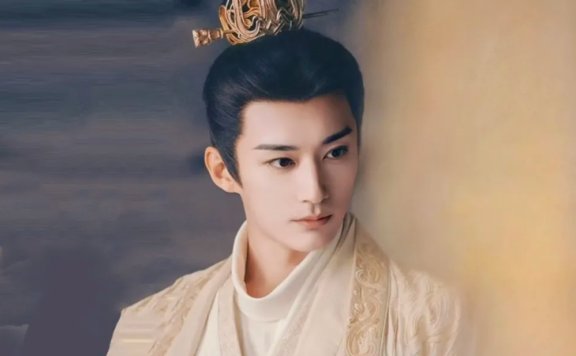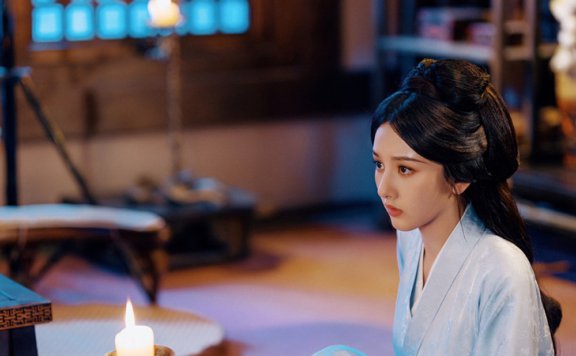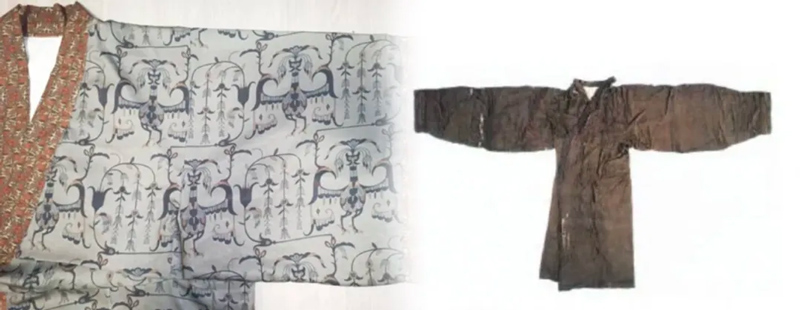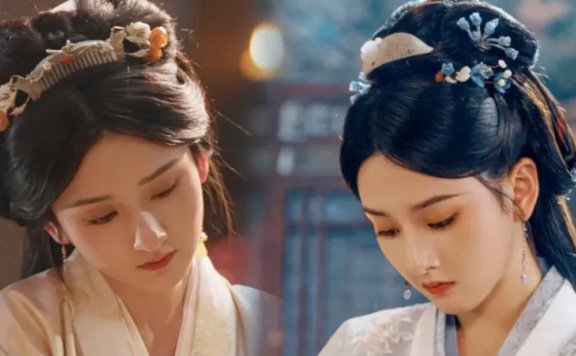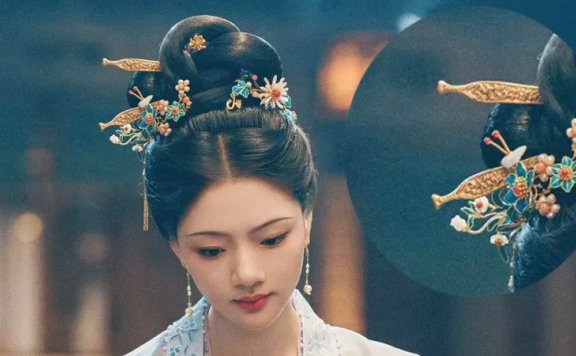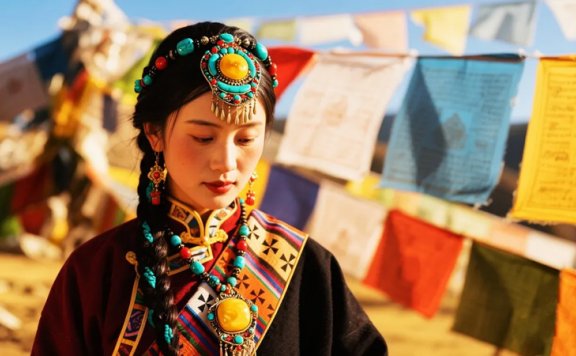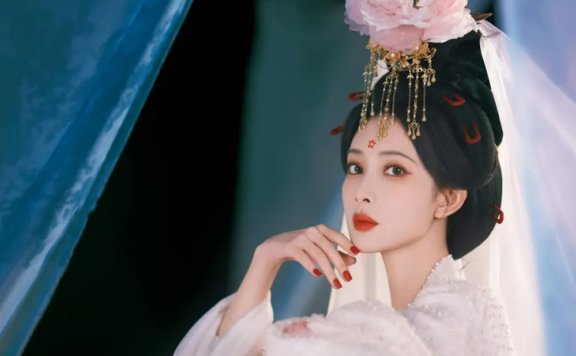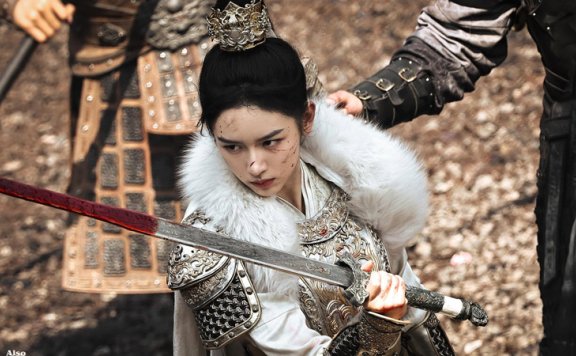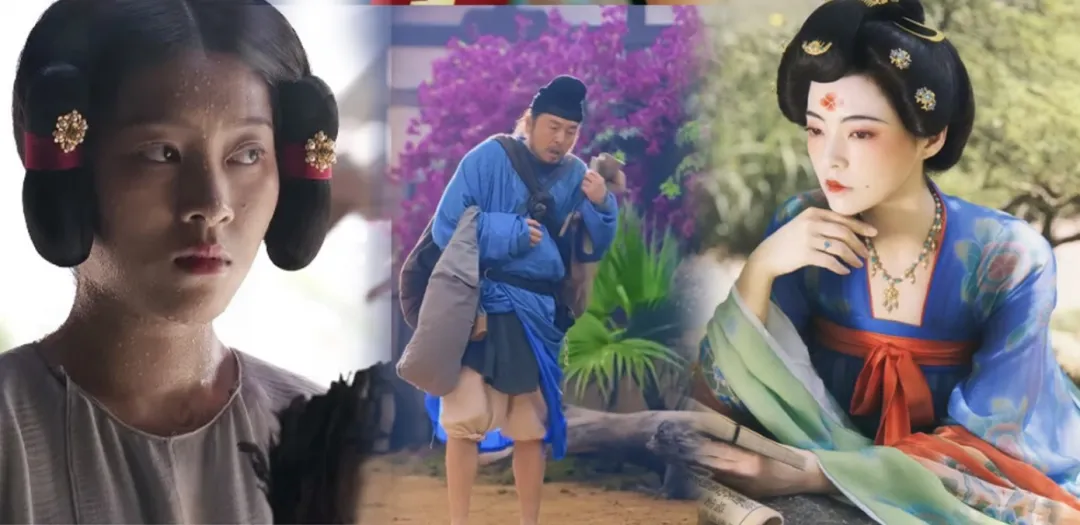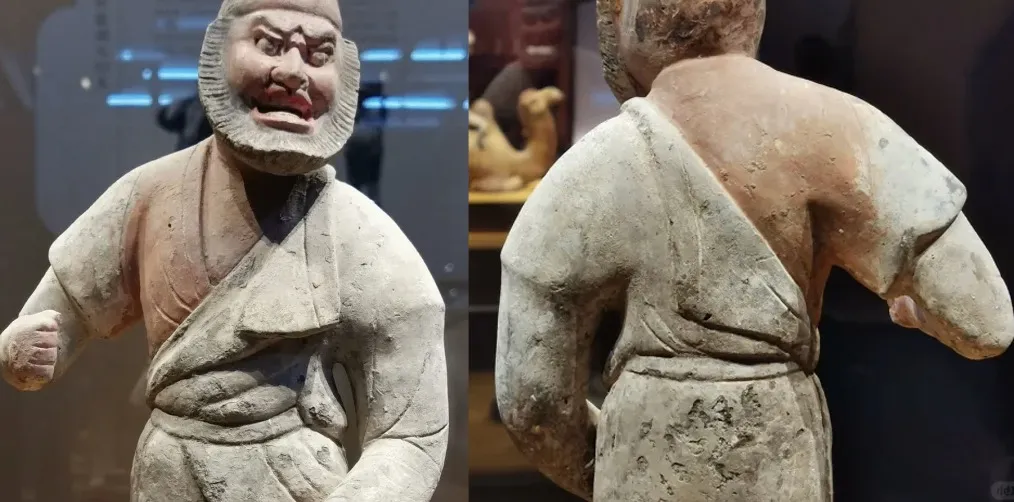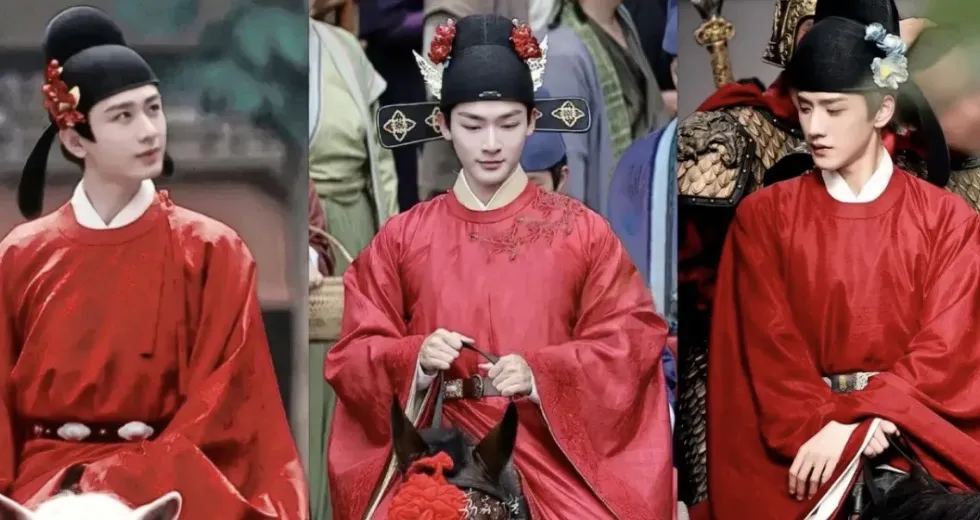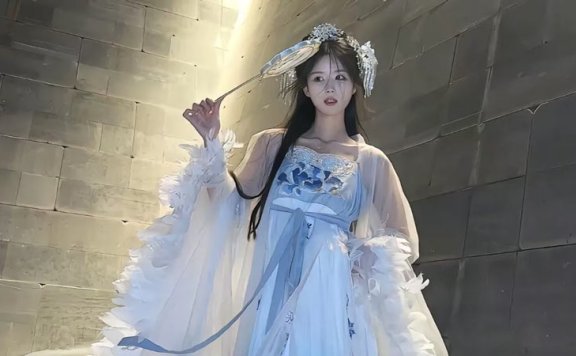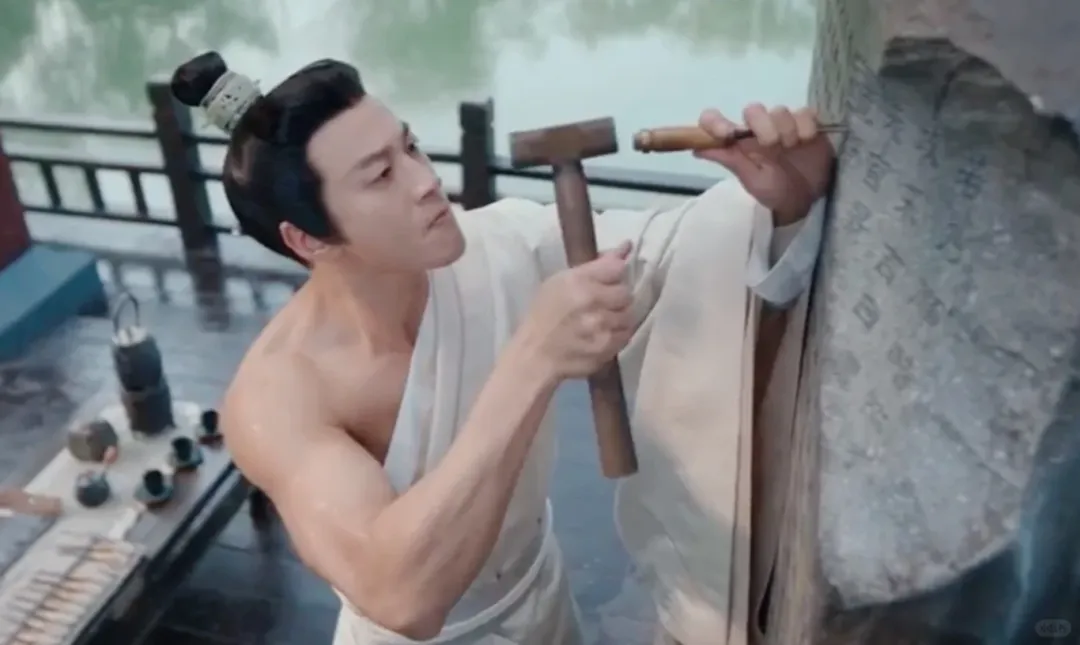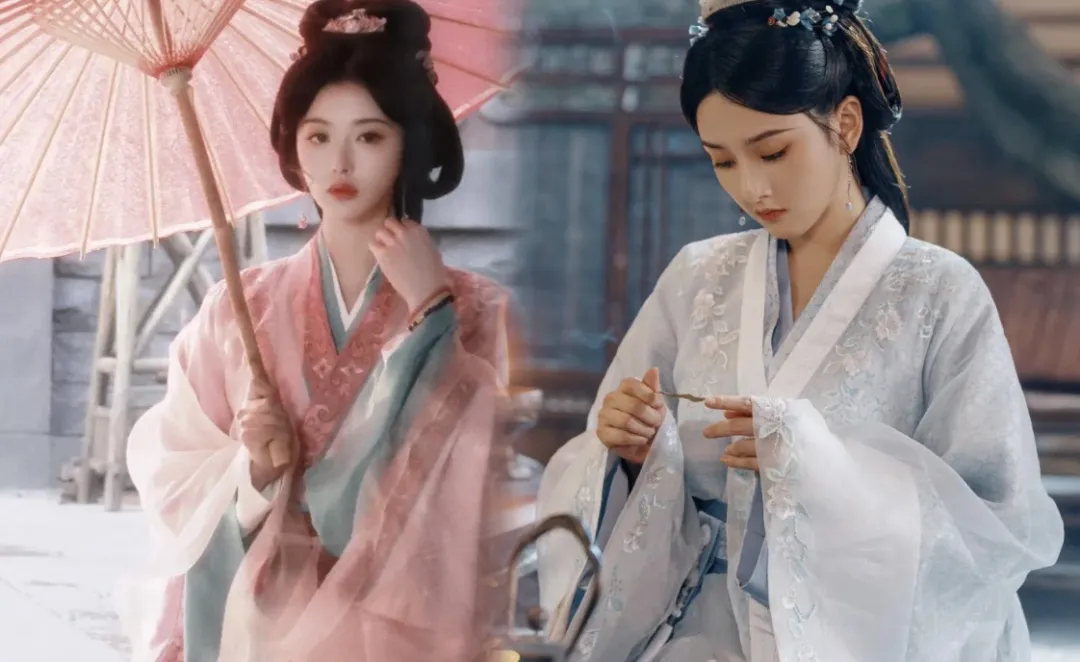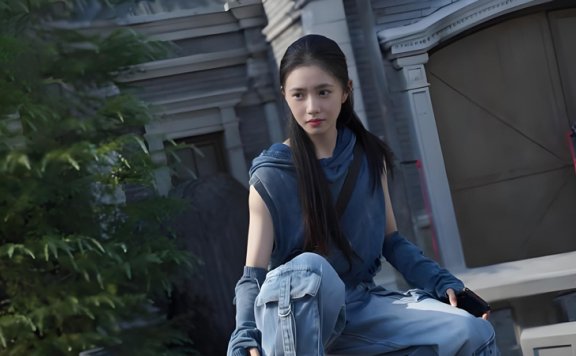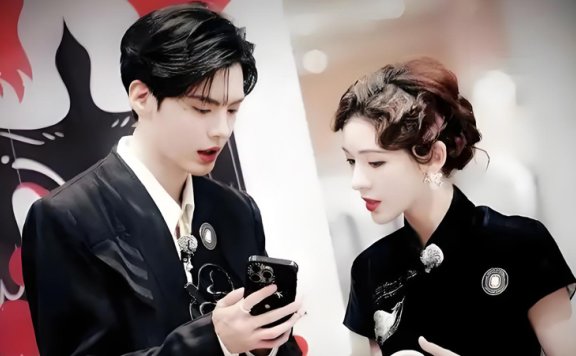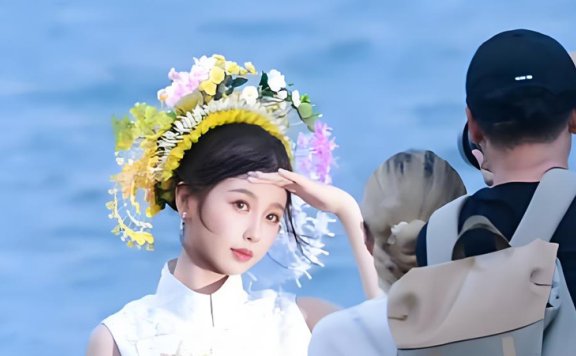Article
搜索结果:
-
Did Han Dynasty Men Wear High-Collars?
A recent period drama costume has ignited curiosity about ancient Chinese fashion. Actor Liu Xueyi (刘学义) appeared in promotional images wearing a high-necked inner garment, a style unfamiliar to many modern viewers. Fans quickly dubbed it the "neckless" undershirt, sparking online discussions about its historical accuracy. This sartorial detail is not a costume designer's fantasy but a potential revival of a real, yet enigmatic, item from the Han Dynasty known as the Quling (曲领). The debate surrounding Liu's attire mirrors a century-old academic puzzle: what exactly was this garment depicted on countless clay figurines? Clay Figurine Clues Archaeologist Zeng Zhaoyu (曾昭燏) provided crucial evidence in her study of pottery figurines from Pengshan (彭山) cliff tombs in Sichuan. She noted a distinct, raised ring around the necks of many figures. This was not a sculptural flourish or a folded collar. The ring had clear, parallel seams and a defined edge, suggesting it was a separate, detachable item with its own structure. The most compelling proof came from two unique "nursing mother" statues. On these, the outer robe was open, revealing a separate piece of cloth covering the chest. Zeng observed this chest piece was continuous with the raised ring at the… -
Did Song Zuer Really Wear Underwear as Outerwear?
In a recent preview for the period drama Biao Mei Wan Fu (表妹万福), set against a Ming Dynasty backdrop, actress Song Zuer's (宋祖儿) character is seen outdoors wearing what appears to be a structured, clasp-fastened undergarment. This has sparked a fiery online debate: Was it historically accurate for a woman to reveal her inner wear during this era, or is this merely a creative costume design choice? The scene challenges modern perceptions of Ming fashion, often imagined as uniformly modest and restrictive. To understand this sartorial choice, we must delve into the specific garment in question and its place in the private versus public life of a Ming gentlewoman. Zhuyao Unveiled The garment causing the stir is not a modern invention but a historical piece known as a Zhuyao (主腰). Popular during the Yuan and Ming periods, it was sometimes poetically called a "pleasure-binding jacket." Its defining feature was a front opening secured by ties or clasps, a distinct departure from the more common wraparound styles. While the overarching term for inner wear in this period is often debated, the Zhuyao stands out for its tailored construction. Surviving artifacts show it could be worn with or without shoulder straps, which could… -
What Did Song Dynasty Elites Wear to Beat the Cold?
As winter winds sweep through modern cities, it is natural to wonder how people in ancient times managed without today's heating systems. The image of historical figures in flowing robes during chilly months might seem illogical, but ancient Chinese developed sophisticated methods to stay warm. This article delves into the innovative clothing and accessories used in dynasties like the Song, revealing how elegance and practicality coexisted in winter wear. From layered garments to insulated accessories, their approaches offer a fascinating glimpse into daily life centuries ago. Layered Clothing In ancient China, people relied on multi-layered garments similar to modern jackets. One key example is the Jia Yi (裌衣), an insulated outer robe designed for cooler seasons. It typically consisted of an outer shell and an inner lining, with padding materials sandwiched in between. This design allowed for flexibility and warmth, much like today's quilted coats. Historical texts, such as poems by Su Shi (苏轼), reference these items, showing their importance in daily life. For instance, in his work Chu Qiu Ji Zi You (初秋寄子由), he describes how putting on a Jia Yi provided comfort as temperatures dropped, highlighting its role in autumn and winter. Archaeological finds support the use of… -
Why Did Ancient Chinese Women Wear Combs in The Prisoner of Beauty?
In the historical drama The Prisoner of Beauty (折腰), actress Song Zuer (宋祖儿) portrays a character whose hairstyle features an elegant hair comb, sparking curiosity about ancient customs. This accessory is not merely decorative; it represents a practice with roots stretching back over five millennia. Throughout Chinese history, combs transitioned from simple tools to sophisticated ornaments, reflecting changes in society, fashion, and personal expression. The sight of a comb nestled in a hair bun invites questions about how daily objects became symbols of beauty and status, weaving functionality with artistry in ways that still captivate today. Early Origins The journey of hair combs began in the Neolithic period, as early societies sought ways to manage hair for practical reasons. Initially, people may have used their fingers or rudimentary implements, but over time, dedicated combs emerged. Archaeologists have uncovered combs made from bone, wood, and stone at ancient sites, indicating their widespread use. These early versions were likely designed to prevent hair from obstructing tasks like hunting or farming, but they soon took on greater significance as personal grooming evolved. By the Warring States period, combs started serving decorative purposes alongside their practical functions. Excavations from this era reveal combs with… -
Wearing the Golden Blooms in Jiang Shan Wei Pin
When actress Wu Jinyan (吴谨言) appeared in the historical drama Jiang Shan Wei Pin (江山为聘) with a headpiece adorned with a row of shimmering golden flowers, audiences were captivated. Each delicate bloom trembled with her movements, sparking lively debates online. Many wondered if such opulent accessories were truly part of ancient attire or merely artistic exaggeration. This curiosity opens a window into the rich tapestry of historical Chinese fashion, where hair ornaments were not just decorative but carried deep cultural weight. The dazzling display in the series invites a closer look at how these items reflected societal values and personal identity across different eras. Ancient Beginnings The use of floral gold decorations in hair, known as Dian (钿, gold flower ornament), dates back to the Wei (魏) and Jin (晋) periods. During this time, artisans began crafting thin gold sheets into flower shapes, which were then attached to hairpins or directly into hairstyles. These items gained prominence as symbols of status and beauty, evolving through subsequent dynasties. In the Tang (唐) era, Dian became highly popular, with intricate openwork designs that showcased advanced metalworking skills. Archaeological finds from Tang tombs include numerous gold flower pieces, confirming their widespread use among… -
Wearing an Earpick Hairpin on Your Head?
Have you ever spotted a tiny spoon dangling from a character’s hair in a historical drama and wondered about its purpose? This intriguing accessory, far from being a random prop, is a traditional Earpick Hairpin, a brilliant testament to ancient Chinese ingenuity. Blending everyday utility with elegant adornment, this object reveals a practical and artistic approach to life that resonates across centuries. More Than Decoration The Earpick Hairpin first appeared during the Shang Dynasty and gained widespread popularity from the Song to the Qing dynasties. Crafted primarily from gold, silver, or bronze, and occasionally from jade, it featured a spoon on one end for cleaning ears and a pointed stem on the other to secure it in the hair. This design allowed the wearer to use it conveniently and then return it to its place as a hair ornament. Decoration soon became as important as function. Artisans employed techniques like openwork carving and filigree, sometimes adding jewels or enamel, to transform these tools into exquisite pieces of art. Variations emerged, including hairpins with multiple spoons or additional prongs, clearly intended more for show than daily use, showcasing the wearer’s status and taste. The innovation did not stop there. The Tang… -
Why Do Tibetans Wear So Much Turquoise and Amber?
Walking through the highlands of Tibet, you might notice something striking: the local people often wear heavy, beautiful jewelry made of turquoise and amber. These aren't just simple decorations. For them, these pieces hold deep meaning, representing history, identity, and security. This tradition is not about fashion in the way many outsiders might think. It is a rich part of their cultural and practical life, developed over centuries. Unfortunately, this very tradition has also become a target for scams, leaving many well-meaning tourists with worthless imitations. Understanding the real story behind these adornments is the first step toward true appreciation. Portable Wealth For nomadic Tibetan peoples, life is defined by movement. Following their herds across the vast plateau, they could not carry fixed assets or large amounts of cash. Instead, they invested their wealth in precious, durable objects like turquoise and amber. Wearing this jewelry was the safest way to transport their life savings. A single necklace or bracelet could represent a significant portion of a family's wealth, making it both a beautiful ornament and a practical financial strategy. This jewelry also functions as a family archive, passed down through generations. Each piece carries the memories and history of those… -
Wang Churan Wears a Cake on Her Head in Serenade of Peaceful Joy
In the historical drama Serenade of Peaceful Joy (清平乐), actress Wang Churan (王楚然) sparked online buzz with a headpiece that viewers likened to a lavish cream cake. This striking ivory crown, worn by her character Zhang Meihan (张妼晗), is far more than a stylistic whim. It is a meticulous recreation of the Chonglouzhi Guan (重楼子冠), a headdress whose design and name were inspired by a prized peony species recorded in the Song Dynasty text Record of Luoyang Flowers and Trees (洛阳花木记). This dramatic accessory opens a window into the sophisticated world of Song aesthetics, where fashion, botany, and social hierarchy intertwined to create some of history's most elegant and meaningful headwear. A Crown Fit for a Flower The real-life inspiration for the crown was the Chonglouzhi peony, cultivated by skilled gardeners to grow over two feet tall with layers of petals that resembled a stacked pavilion. Artisans, captivated by this natural wonder, translated its form into an exquisite headdress. The drama highlights the strict sumptuary laws of the era through a plotline where Emperor Renzong of Song punishes an official for presenting the crown, underscoring how such items were governed by status and regulation. The crown was not merely decorative;… -
Floral Crowns in Chinese Drama: Who Wears It Best?
The delicate art of adorning hair with flowers, a signature look in Chinese historical dramas, has recently captivated audiences once more. Meng Ziyi's (孟子义) stunning floral hairpiece in promotional images for the newly announced drama Tigers Sniff the Rose (尚公主) sparked widespread admiration and discussion online. This fascination isn't new; period productions consistently feature elaborate floral hairstyles, showcasing diverse interpretations of classical aesthetics. From the lavish Tang dynasty ideals of voluptuous beauty to more contemporary, slender adaptations, these intricate arrangements are more than mere decoration—they are visual narratives of character, era, and artistic vision. The choice of blooms, their placement, the hairstyle's complexity, and crucially, the actor's physical harmony with the style, all converge to create moments of breathtaking screen elegance. This enduring trend highlights the powerful synergy between costume design, historical homage, and the unique charisma of the performer. Modern Interpretations Recent costume dramas offer a vibrant showcase of floral hair accessories. Meng Ziyi's look in Tigers Sniff the Rose , featuring elegant updos perfectly complementing soft pink peonies, marks a significant improvement, ditching distracting bangs seen in her earlier role in Royal Rumours (花琉璃轶闻). In that production, while Su Mengyun's (苏梦芸) fuller figure and crescent-moon adorned updo exuded… -
Talk with Zhou Ye: Wearing Armor Onscreen, Training Offscreen
The interview took place on a hot, sticky summer night. Zhou Ye (周也) had just wrapped up an offline promo event for Legend of The Female General (锦月如歌), and her energy carried that faint excitement you can't quite hide even when you try. "The first time I heard about Legend of The Female General was online. I didn't expect they would actually reach out to me later and hand me the script," Zhou Ye said. After reading just the first few episodes, she was struck by the core of He Yan's character. It wasn't the spectacle of big battle scenes or some clever plot device that moved her. What caught her was He Yan's resilience—the toughness that sits deep inside this character. Zhou Ye wanted to bring that to life on screen, whole and unbroken. In our conversation, we started with this new drama. From the first time she flipped open the script to the last time she set aside the heavy armor; from sweating in the training field to the joy, anger, and sorrow she carried both on and off set; and also how she views her work and the road ahead. Zhou Ye's answers came across just like… -
Why Wear Long Sleeves in Southern China, Lingnan?
In the ancient cdrama The Lychee Road, Li Shande was sent to Lingnan to transport litchis for the emperor. Attentive netizens noticed that in this drama, Lingnan was extremely hot, with almost everyone sweating. However, except for Governor He, almost everyone wore long sleeves. Weren't they hot? Let's start with the conclusion. During most of the Tang Dynasty, the temperature in Lingnan was actually a bit higher than our current summers. Some scholars pointed out that the temperature at that time was about 1 - 2℃ higher than it is now. People wore long sleeves mainly because of the basic etiquette for formal occasions. Another reason is that although the clothes were long - sleeved, they were made of natural fabrics, which weren't as stuffy as chemical fibers. Moreover, long - sleeved shirts and long trousers could effectively prevent mosquito bites. As we've popularized before, the short - sleeved clothes worn by Governor He were generally used as an inner layer with a round - collared robe. For someone like Governor He to appear directly in short - sleeved clothes alone, such occasions were basically at home or other informal settings. Also, some laborers or working people who needed to… -
Lan Yingying Wears Song Style Hanfu
In the cdrama Perfect Match, Lan Yingying (蓝盈莹) played the role of an imperial concubine, a legitimate daughter favored by the emperor. She also planned for her family, and we witnessed her growth and transformation. Let's start with the conclusion. The outfit Lan Yingying wore was a style of the large-sleeved shirt and skirt in Song Dynasty clothing. This kind of large-sleeved shirt was usually worn by women. It had a straight collar and a front-opening design and was mainly used as an outer garment. From Tang Dynasty paintings and unearthed clothing from the Song and Ming dynasties, we can see that the large-sleeved shirt was popular in the Tang, Song, and Ming dynasties. In the Song Dynasty, it developed into an important formal dress for noble women, especially as the daily wear for concubines. By the Ming Dynasty, the way of wearing the large-sleeved shirt was similar to that in the Song Dynasty. It was also listed as the regular clothing for queens and noble women. Typical styles included the bright red large-sleeved shirt and the bright yellow large-sleeved shirt. This evolution of the style reflects the historical continuity of traditional formal dress culture. The exquisite materials and elaborate… -
Why Doesn't Yue Yunpeng Wear His Hanfu Clothes Properly?
Yue Yunpeng, why don't you wear your clothes properly! In the ancient costume drama The The Lychee Road, when Yue Yunpeng's character Zheng Ping'an makes his first appearance, he is sloppily dressed and wears what seems like a "mini skirt". The CP combination with Lei Jiayin's Li Shande makes people can't help laughing. Is this "mini skirt" deliberately done for the drama effect or did such a garment really exist in history? First, let's state the conclusion. This is a common Tang-style inner garment in the round - necked robe, which can be simply called "Banbi" (半臂) according to its appearance features. Generally speaking, this kind of Banbi inner garment has two functions. In the Tang Dynasty, both civil and military skills were highly valued. This inner garment can support the shoulder contour of the outer round - necked robe, making the figure look more upright. Also, it can be conveniently worn with the chest exposed in hot summer or during sports. Since it is used as an inner garment, natural and breathable materials such as linen are usually used. "Banbi" also has another name, "Banxiu" (半袖). It is a very special short - sleeved top in ancient China. Its… -
What Clothes Did Ancient Champions Wear?
As the college entrance examination kicks off, do you also reminisce about the days when you were preparing for the exam? The clothing that ancient scholars yearned to wear throughout their lives was the robe of a Jinshi (进士, successful candidate in the highest imperial examination) after passing the exam. May all students inherit the good luck from ancient times and see their dreams take flight from now on! Let's start with the conclusion. As the poem goes, "In proud triumph my horse gallops with ease; I view all flowers in Chang'an in one day." After succeeding in the imperial examination, ancient scholars didn't don the Western academic gowns we see today! It's crucial to note that China's academic gowns should have their own heritage. After scholars became Jinshi or champions, they would have different attires. This once in a lifetime honor made people eager to have their portraits painted. The champion would be specially granted a set of imperial - bestowed clothing. You know, being the champion is called "the greatest honor under heaven" and is the highest honor in the imperial examination system. Let's proceed in order. On the day of the announcement of the examination results after… -
Wearing History: How Hanfu Reshapes Fashion and Identity
The rustle of silk on city streets signals more than a fashion trend. Across China and beyond, young people wearing flowing robes with wide sleeves and crossed collars aren't just dressing up—they're reviving a sartorial language spoken for millennia. Hanfu, the traditional attire of the Han Chinese, carries within its seams profound cultural narratives, aesthetic philosophies, and social codes that transcend mere costume. This resurgence isn't about recreating museum exhibits; it’s a dynamic reclamation of identity. Each fold in the fabric whispers stories of dynasties past, while the vibrant modern interpretations speak boldly to the present. Far from being static relics, these garments embody an evolving dialogue between heritage and innovation. Core Principles Woven in Hanfu distinguishes itself through fundamental design elements that carry deep symbolic weight. The cross-collar forming a "Y" shape visually represents the balance of yin and yang, reflecting ancient cosmological beliefs. The right-over-left lapel served historically as a cultural identifier for Han communities, contrasting with left-over-right styles associated with some neighboring groups. This distinction held such significance that Confucius remarked on its importance in defining civilized society. Equally characteristic are the absence of buttons, replaced by fabric sashes tying the garment, and the signature wide sleeves.… -
Why Does He Rundong Wear His Clothes Half-Exposed?
In the ancient-costume TV series The Prisoner Of Beauty, when He Rundong, playing Mr. Zhenshi, made an appearance with his arms exposed, it completely subverted everyone's understanding of the phrase 'too weak to even bind a chicken'. Why do we subjectively associate exposing one arm with being good at martial arts? Where does this way of wearing half-exposed clothes originate from? Let's start with the answer. Some people call this way of dressing 'Wenwu Sleeve' (文武袖), but this is mostly a term used in Chinese opera. In the history of traditional Chinese clothing, a similar way of dressing can be traced back to the period of 'Hu Fu Qi She' (胡服骑射, a military reform in ancient China). In The Splendor of the Nation, Li Xian, playing Jiang Changyang, also often wore clothes in this way. A round-collared robe was usually paired with a round-collared shirt and a half-arm garment. When practicing martial arts, archery, or doing labor for convenience, people would adopt this 'bare-armed' way of dressing. And there was often a half-arm garment inside the robe. The material of the half-arm garment paired with the round-collared robe was usually a stiff fabric that could prop up the sleeves of… -
Did Song Zuer Wear a Transparent Gauze Dress in Cdrama?
In the ancient cdrama "The Prisoner Of Beauty", the female characters wear Han - style clothing and sometimes drape a transparent gauze dress over it. Through the hazy layer, one can faintly see the lines of the inner clothing. Is this an ancient people's dressing preference? Let's start with the conclusion. This style inevitably makes people think of the "Plain Gauze Zen Robe" unearthed from the No. 1 Han Tomb at Mawangdui in Changsha. The Zen robe, also called a "single - layer robe", is a single - layer garment. The two plain gauze Zen robes unearthed from Mawangdui weigh 48g and 49g respectively, and can be folded and stored in a matchbox. The unearthed plain gauze Zen robe belonged to Xin Zhui, the wife of Li Cang, the prime minister of the Changsha Kingdom. Except for the collar and cuffs decorated with brocade, the whole robe is made of plain gauze, without lining and color. So it's called the plain gauze Zen robe in the unearthed inventory. This gauze dress is very light, reflecting the Han Dynasty clothing dressing style of layering a light gauze dress over a brocade robe. Through the 49 - gram plain gauze, the patterns… -
Liu Haocun's Workwear as a Symbol of Freedom and Femininity
The closing scenes of Qi Gen Xin Jian linger not just for its mystical plot, but for Liu Haocun’s rugged-yet-elegant workwear ensembles. As Mu Dai (木代) navigating urban alleys and ancient secrets, her pocket-laden trousers and structured jackets became symbols of freedom. This summer, workwear sheds its purely utilitarian image, morphing into a canvas for self-expression. No longer confined to "tomboy" aesthetics, modern iterations fuse functionality with subtle femininity, offering wearers both comfort and attitude. From Hailey Bieber’s parachute pants to military-inspired cropped cuts, the trend embraces diversity in form and spirit. Utility Reborn Workwear’s origins trace back to 19th-century labor needs. Durable fabrics like canvas resisted wear, while oversized pockets held tools for miners and mechanics. Its transition from factory floors to fashion runways began when designers recognized its raw authenticity. Today’s iterations retain pragmatic elements—deep pockets, robust stitching—but refine silhouettes for metropolitan life. Lightweight nylon replaces heavy twill, and articulated knees allow effortless movement. The cargo pant remains the trend’s cornerstone. Its multiple pockets and straight-leg cut flatter all body types, camouflaging insecurities while elongating frames. Avril Lavigne’s iconic pairing with band tees in the 2000s demonstrated its rock-edge potential. Now, cropped versions dominate, as seen in military-green… -
Zhang Yuxi Received Praise for Wearing Cheongsams
When ordinary tourists become accidental paparazzi, magic unfolds. Recently, a Chinese couple vacationing in Paris unintentionally documented entertainment gold: actors Bi Wenjun (毕雯珺) and Zhang Yuxi (张予曦) filming the variety show Paris Partners (巴黎合伙人). Their spontaneous reactions—captured in viral social media posts—reveal more than celebrity glamour; they showcase humanity’s universal appreciation for authenticity. Unlike staged red-carpet moments, this genuine encounter between stars and strangers highlights how unscripted interactions resonate across generations. The couple’s unfiltered admiration, especially their playful nod to Zhang’s comfy sneakers paired with elegant qipao, sparked nationwide delight. This incident isn’t just about fame—it’s about relatable joy in unexpected connections. Authenticity Wins Hearts Celebrity images often live in curated digital ecosystems. But here, Bi and Zhang’s charm transcended screens. The parents’ immediate praise—“What a handsome young man!” and “Such a beautiful girl!”—came without influencer jargon or fandom bias. Their compliments reflected raw, cross-generational appeal. Bi’s crisp casual wear exuded approachable coolness, while Zhang’s qipao-sneaker fusion balanced tradition with modern comfort. What impressed most wasn’t their looks but their conduct. Amid bustling Parisian streets and curious onlookers, both stars maintained warm professionalism. No rushed exits or security barriers—just patient smiles. This dismantles the “diva” stereotype, proving respect leaves louder… -
Yu Shuxin is Wearing Zanhua Hairpin in Seaside
A playful wink, a gust of salt-kissed wind, and a single fresh blossom tucked into flowing dark hair – this seemingly simple moment, captured on the sun-drenched Fujian coast, has propelled Yu Shuxin (虞书欣) into the social media stratosphere. Far from the typical glamorous studio shoot, these candid behind-the-scenes glimpses from the set of her upcoming drama, Road To Success (灿如繁星), showcase a different kind of star power: effortless, authentic, and deeply connected to its breathtaking seaside setting. Yu Shuxin, shedding elaborate costumes for a breezy white dress, transforms the shoreline into her runway, proving that true radiance often blooms from unadorned simplicity and genuine joy. Her spontaneous interaction with the camera, particularly the now-iconic wink, resonates not just as celebrity charm, but as a pure expression of delight in the moment, instantly captivating audiences and setting the internet ablaze with anticipation for the drama itself. Seaside Style Ditching ostentatious luxury, Yu Shuxin’s coastal look for Road To Success is a masterclass in understated elegance. Her attire, a fluid white dress seemingly washed in the hues of the ocean itself, speaks of comfort and ease. The real magic, however, rests literally on her head: a single, delicate wildflower plucked from…
